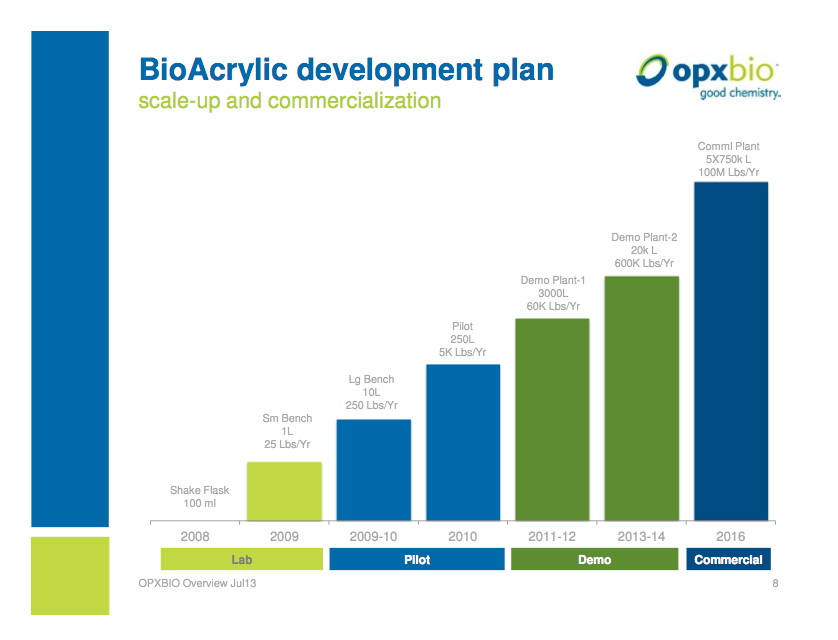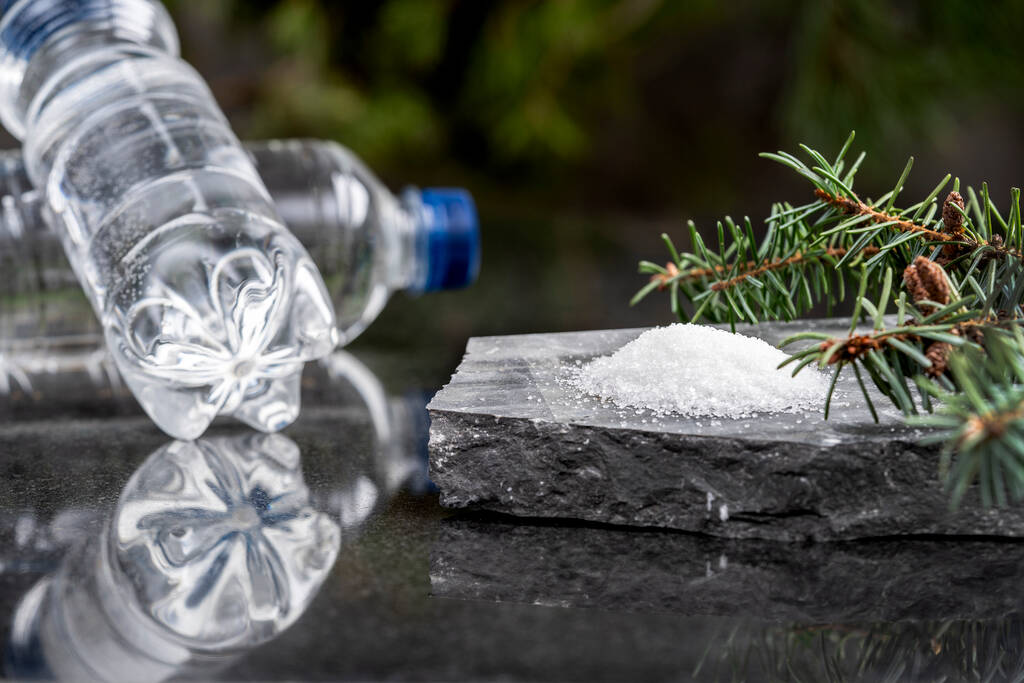It has been more than a year since the blog had the pleasure of again chatting with OPX Biotechnologies (OPXBIO) CEO Charles Eggert. Last Tuesday, Eggert mentioned that the company has started this month their plans to raise their fourth round of funding through private equity financing from new and old strategic and [or] financial investors.
OPXBIO is expecting to raise around $35m for the D round funding, and according to Eggert, current investors have indicated that they will continue to support OPXBIO with additional funding.
Eggert admitted that it is not that easy these days to get funding compared to their last C round in September 2011 when several companies in the renewable chemicals space have been successful in their IPOs. OPXBIO was able to raise $41m back then.
“Raising funding back then was easier as there was a lot of optimism in the space. Clearly since then, there had been some challenges with pricing for publicly sold stocks lower than what they were during their IPOs. That always put a bit of a damper on the enthusiasm even for private investment space. However, we are confident with this round as OPXBIO is in very good shape coupled with the fact that we have a set of strong current investors who continues to support the company.” – Eggert
Acrylic Acid update
OPXBIO is currently running a 3,000 liter-scale fermentation at the Michigan Biotechnology Institute (MBI) that can produce around 30 tons/year of biobased acrylic acid via the 3-HP (hydroxypropionic) route. The company is looking to scale up with a second demo plant between 20,000 and 50,000 liter fermentation in Q1 or Q2 next year, which can produce about 300 tons/year biobased acrylic acid.
The company’s first commercial plant of about 50 ktpy biobased acrylic acid capacity (with five 750,000-liter fermenters) is expected to start-up around 2017 in partnership with Dow Chemical, said Eggert. Location has not yet been determined although Eggert said it does makes sense to consider Brazil as it is a growing market for acrylic acid in terms of demand; there is no current domestic supply of acrylic acid at the region (although BASF is currently building a petroleum-based acrylic acid plant which is expected to start within a year or two); and Brazil has a good feedstock situation as well as strong support for the biobased chemicals industry.
And by the way, we must not forget that Dow Chemical has sugarcane assets in Brazil through its joint venture with Mitsui & Co.
The other logical location is in southeast Asia in terms of growing ongoing demand for acrylic acid as well as feedstock availability, according to Eggert.
OPXBIO is currently within 80%-90% of its commercial goals in terms of yields. The ultimate target cost for their bio-acrylic acid is within the price range of 75 cents per pound to $1 per pound.
While production cost for their biobased acrylic acid will be at par compared to petroleum-based acrylic acid, the market price for biobased acrylic acid within the initial commercialization phase will be based on supply and demand factors, said Eggert. By 2020, OPXBIO could be producing between 150 ktpy and 200 ktpy of biobased acrylic acid in two plants — still a very small portion compared to the overall 8bn-10bn lb (4m-5m tons) global acrylic acid market, he said.
“Certainly, there are certain downstream customers who have a high preference for renewable-based acrylic acid and they will be the earliest and most aggressive adopters of these technology willing to pay the price to acquire the limited supply available,” said Eggert.
“This will help us further support investment in more plants, to bring in more capacity that will help pricing to come down to a curve for those who need bigger volumes but are not willing to pay as high a price for those initial quantities,” he added.
The blog asked Eggert whether Dow Chemical’s increased investments in on-purpose propylene production via propane dehydrogenation (PDH) plants will impact Dow’s investments in biobased acrylic acid.
The standard petroleum-based method of producing acrylic acid involves the oxidation of propylene in a petrochemical plant. Dow plans to build a 750 ktpy PDH plant in Freeport, Texas, which is expected to start in 2015, and another unit that may start up in 2018. Several PDH projects are underway in the US capitalizing on lower cost propane coming from shale gas.
Dow currently purchase all of its propylene use, where it is consumed broadly across the company’s entire business portfolio.
Eggert said Dow’s PDH investments does not diminish the company’s interests or intent to have a renewable form of acrylic acid available to their customers. Dow Chemical roughly accounts for 20% of the global acrylic acid production.
“We just had to keep in mind the relative size of the global acrylic acid market. Also, we think it’s terrific that the US chemical industry is getting tremendous stimulus from shale gas opportunities. The industry is investing, growing, and becoming more profitable – that is good for all of us in the chemical industry.” – Eggert
Fatty acid update
OPXBIO’s second product involves fatty acid, which was developed through a $6m grant from the US Department of Energy’s ARPA-E program in 2010, with the aim of producing renewable jet and diesel fuel by converting CO2 and hydrogen to fatty acids via fermentation, and the fatty acids are then chemically converted into jet fuel and diesel.
Production of fatty acids is still in laboratory phase, according to OPXBIO, and the program is expected to wind down at the end of this year. The company said they have the capability of producing tailored fatty acid carbon chain lengths (much like Solazyme except that it uses algae oil for feedstock).
OPXBIO said it is in the process of establishing strategic partnerships for their fatty acids more likely for chemical applications rather than for fuel. The company noted the fatty acids global market at $10bn with key applications in household and personal cleaning and industrial fluids.
Other products
The blog also asked about OPXBIO’s multi-year collaboration with Evonik on the development of specific biobased specialty chemicals. Eggert still did not disclose what the products are but noted that each party can commercialize the developed products independently. According to a recent ICIS news, the companies are targeting commercialization of the developed specialty chemicals within four years.
OPXBIO is also currently negotiating a joint development agreement for biobased acrylamide with a collaboration partner. Current market price for acrylamide is $2.15/lb and current manufacturing cost via acrylonitrile is around $1.50/lb. Key application for the $3bn acrylamide global market is in water treatment polymers.





